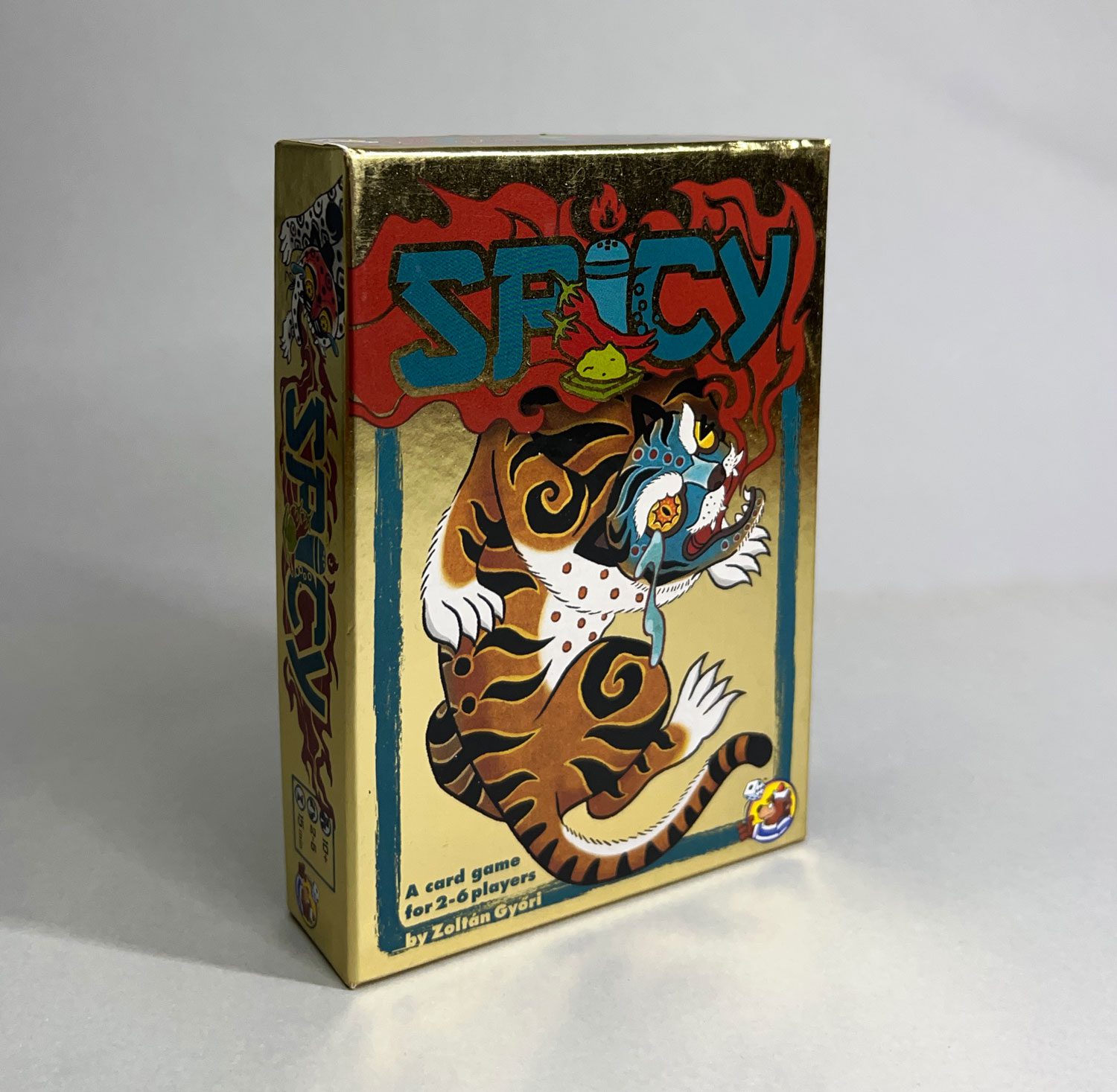
When it comes to games, I tend to favor crunchy Eurogames and 2-player abstracts. It’s been a surprise to me, then, to discover just how much I enjoy a good bluffing card game. I’ve previously written about Skull and Cockroach Poker Royale—two games that I thought were the only bluffing card games I needed in my collection.
Then I played Spicy.
The game’s background story is there were once three tigers who grew tired of fighting one another for dominance. Having grown tired of fighting, they decided to settle their claim by seeing who could eat the spiciest food. A silly concept, but it makes for such a great game.
Let’s get it to the table so you can see for yourself.
Spicy Deck of Cards Pun
The Spicy deck of cards consists of three types of spices (or suits): Pepper (blue), Wasabi (green), and Chili (red). Each spice has three complete runs of cards numbered 1-10.
The deck also includes three Wild Spice cards that show all the spices, but have no number associated with them. There are also three Wild Number cards that show 1-10, but have no spice shown.
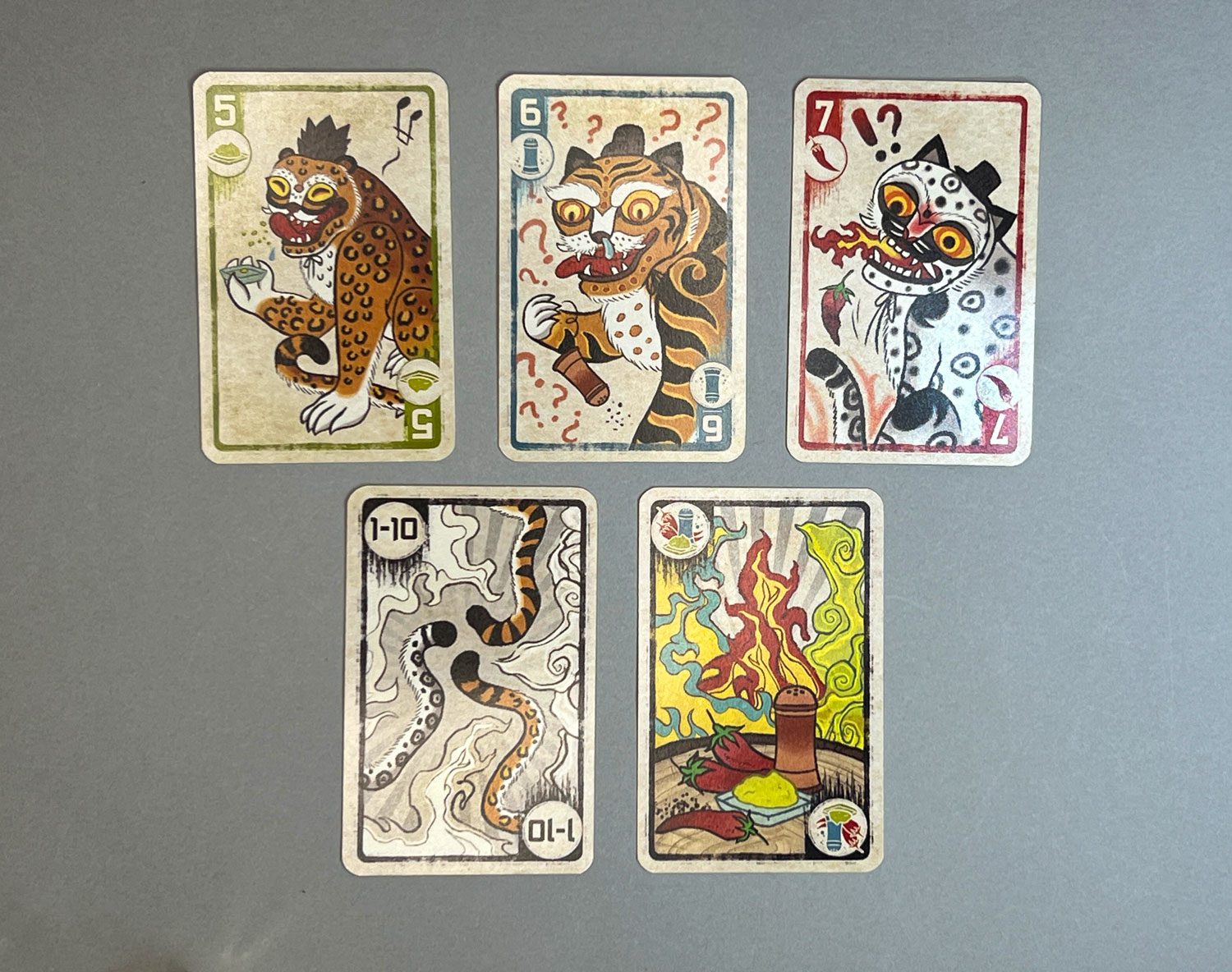
Spicy Game Playing Pun
Find the three 10+ cards and place them to the side. Take the turquoise-backed card and, using the front illustration, insert it into the deck at a point that matches the number of players.
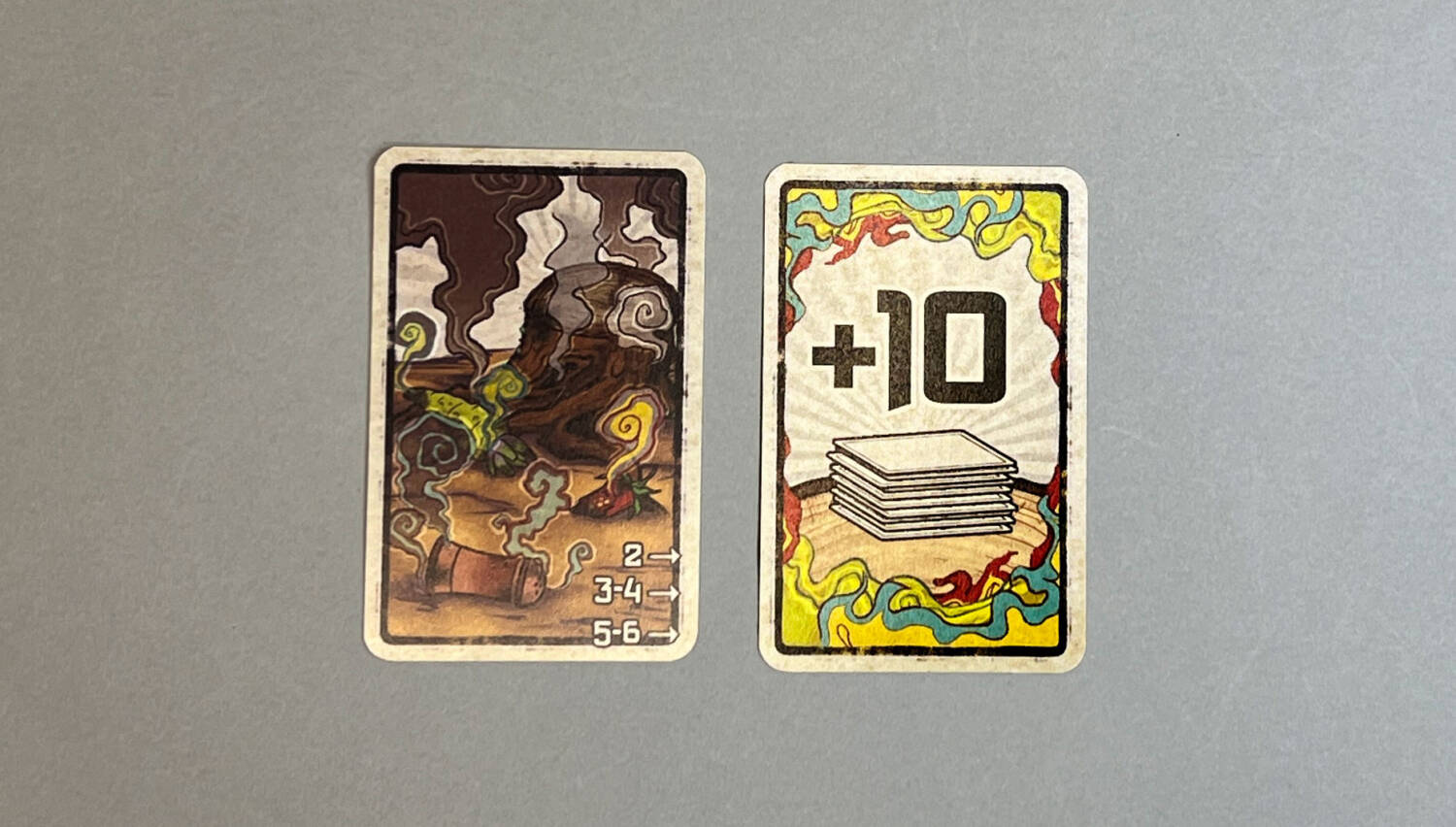
Shuffle the deck and deal six cards to each player. The youngest player goes first.
On a turn, you may either pass and take a card from the top of the deck or play a card from your hand. It’s that simple.
The first card that is played at the start of any new round must be the 1, 2, or 3 of any spice. That card, and all cards played in the game, is played face down in the middle of the table. This sets the spice suit for the round.
After the first card is played, each player, in turn, must play a card from their hand of the same spice, but with a higher number than the last card played. That number can be anywhere from one more than the initial card declared (a 1 Wasabi followed by a 2 Wasabi) to 10. Once someone plays a 10, a new round is started. The spice remains the same, and the next card played must be a 1, 2, or 3. The cards that follow must, again, be higher than the previous number stated.
Spicy Challenge Pun
However, this is a bluffing game! You don’t have to be telling the truth about that face-down card you just played. The spice could be different, or the number could be any number at all. Or both could be different. That 8 Chili you just played could just as easily be a 4 Pepper.
When any other player thinks the card that was just played is not what it was claimed to be, they place their hand paw (remember, these are tigers playing) on top of the cards to contest the card.
However, simply protesting that the top card is not what was stated would be far too easy. That’s why the challenging player must choose whether it’s the number or the spice that is wrong.
If the challenger guesses correctly, they take all the cards played in that round to their area and set them aside, face-down, as points to be scored (one per card) at the end of the game. The player who played the card takes two cards from the top of the deck and adds them to their hand. However, if the challenger is wrong, the person who played the card takes all the cards and the challenger must take two extra cards.
If you play one of the all spices or all number cards, it counts as any spice or any number, respectively. You can never lose a challenge to what’s on the face of the card, only what isn’t. (The all spices card wins a challenge to the type of spice, but loses a challenge to the number claimed.)
If you manage to empty your hand of cards, you’ll be rewarded with one of the 10+ cards, worth ten extra points. If you manage to get two of them, you automatically win the game. Otherwise, the game ends when the turquoise card appears in the deck.
Spicy Thinking Pun
I love this game.
Designer Győri Zoltán Gábor has taken the concept behind the familiar card game known variously as Cheat, I Doubt It, or BS, and tweaked it to make a shorter, more intense game. By having a smaller hand of cards, cards can be immediately questioned—but only after that delicious question of which aspect of the card is wrong. By dangling the promise of 10 extra (often game winning) points in front of you for playing all the cards from your hand, both you and your opponents must carefully consider your choices on those last cards.
I’ve played Spicy with three different groups. The teach has taken less than a minute and games have ended with a request to play it again right away. My weekly gaming group has requested it three weeks in a row.
And, as if that wasn’t enough, I want to show you a sampling of the artwork on the cards. That background story of the three tigers holding a spicy food eating contest gives us these gorgeous works by artist Jimin Kim.
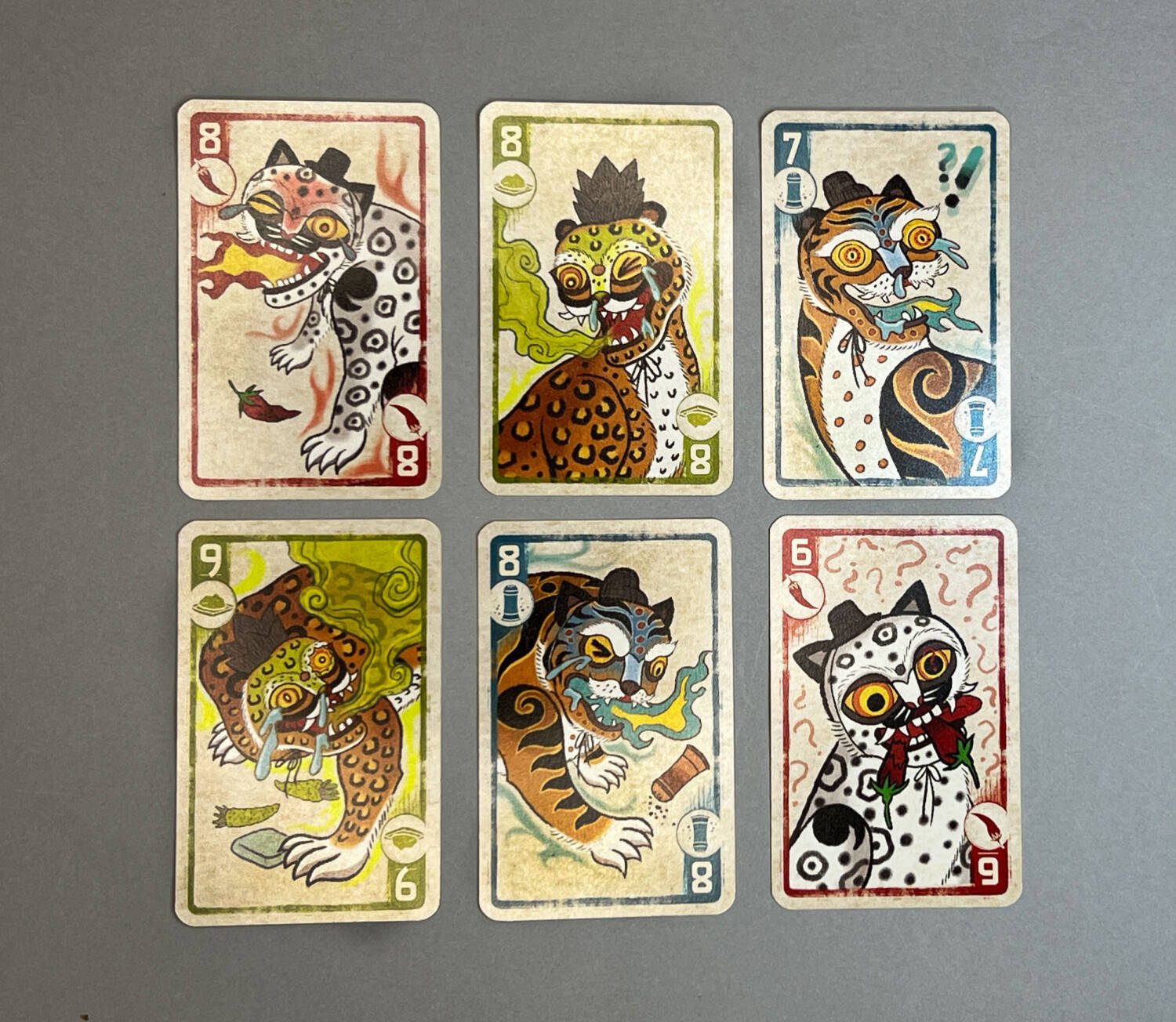
If you like bluffing games, you really need to check out Spicy. At around $20 online, I cannot recommend this one enough.


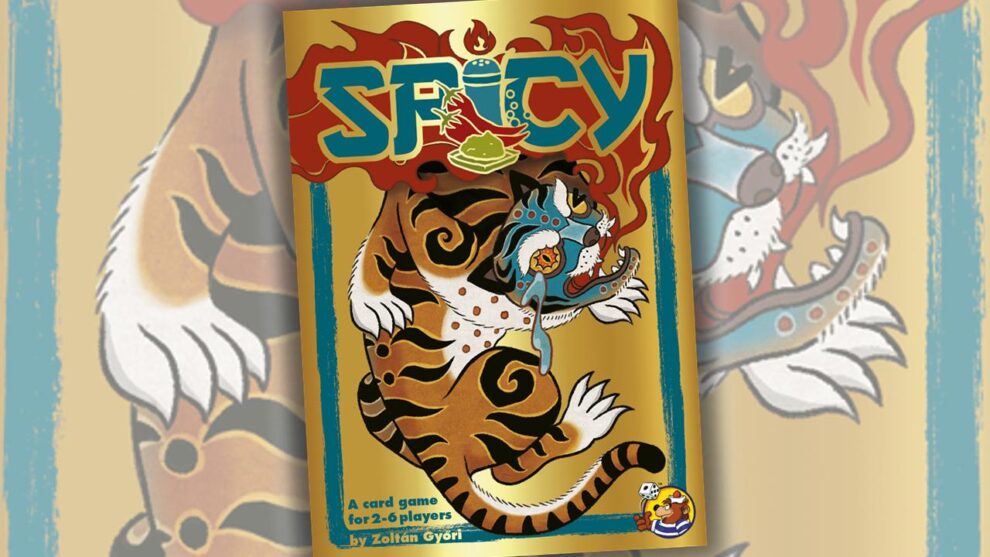









Add Comment